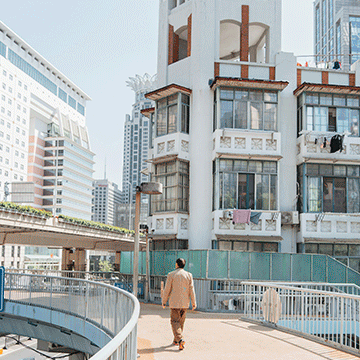Download Assets
description
It’s day 18 of our series! In today’s episode, learn everything about Photoshop blending modes. Discover how to combine layers based on light, dark, or color information. This tutorial covers the major blending groups, essential keyboard shortcuts, and how to use blending modes with levels and other tools to create stunning composites.
Follow along with all 30 episodes as we explore the the magic of Photoshop together!
Watch Next
JOIN 30 DAYS OF PHOTOSHOP (FOR FREE!)
Ready to jump in? Sign up and we’ll email you a printable calendar and daily class schedule so you can get started right away!
Image Source
- Eric Soubeyrand
- Angèle Kamp
- Emilia Rahmatullina
- Boston Public Library
Images sourced from Unsplash.
Share
AFTER
BEFORE
Blending Modes, Explained.
Blending Modes control how different layers blend, interact, and create a combined image. By learning how to combine layers and their contents in different ways, you can seamlessly composite images, fix exposure issues, and apply stunning color and lighting effects that would be impossible with other tools.
The Blending Basics
Blending modes determine how a layer interacts with the layers beneath it. They are grouped in the Layers panel by function. Normal is the default, but the other groups—Darken, Lighten, Overlay, and Color—are where the real magic happens. The Darken group (Darken, Multiply) makes dark areas visible and light areas invisible. The Lighten group (Lighten, Screen) does the opposite, making light areas visible and dark areas invisible. To quickly cycle through blending modes, select the Move tool (Keyboard Shortcut “V”) and hold Shift while pressing the + or – key.
Master the Multiplier
The Multiply blending mode is perfect for compositing elements with a light background. For example, if you have a dark subject on a white or light-colored background, simply set the layer’s blending mode to Multiply. The light background will become invisible, leaving only the dark subject. If the background isn’t pure white, use a Levels adjustment (Keyboard Shortcut “Ctrl/Cmd + L”) to make the light areas completely white. This technique is often used to add images to a frame or to add handwriting to a letter.
Use Screen for Lights
The Screen blending mode works just like Multiply, but in reverse. Use it for images that have light elements on a dark or black background, such as light leaks, bokeh, or lens flares. Setting the layer to Screen will make the black background disappear, leaving only the light effects. If the background isn’t completely black, use a Levels adjustment (Keyboard Shortcut “Ctrl/Cmd + L”) and select the black eyedropper to make the darkest areas pure black, ensuring they become invisible.
Color and Light Effects
You can use blending modes to apply the color and light from one photo to another. Just bring in a new image, set its blending mode to Soft Light or Overlay, and apply a Gaussian Blur (Filter > Blur > Gaussian Blur) to the layer to make the details invisible. Now you can use the light and color information of that blurred layer to give your main image a completely new look. Adjust the layer’s opacity to control the intensity and use a Gradient Map to harmonize all the colors in your image for a professional finish.
Join us tomorrow as we continue our 30 Days of Photoshop series and learn how to use Dodge & Burn to control light and shadow in your photographs.












